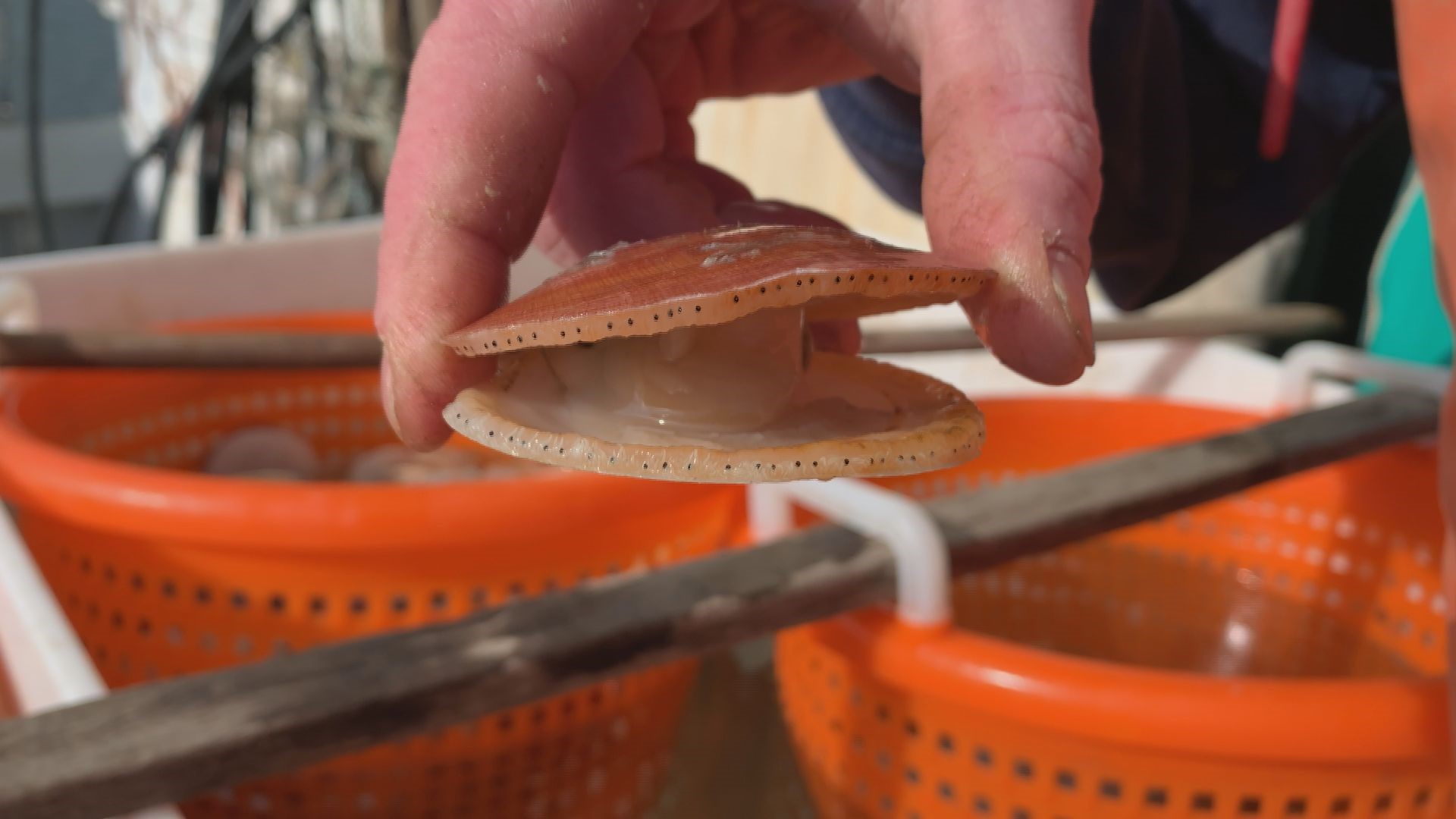STONINGTON, Maine — A mile off the coast of Stonington, on a gray morning, Marsden Brewer and his son Bob haul small blue bags from the ocean floor up to their 38-foot fishing boat. Through the mesh of what's called spat bags are thousands of baby sea scallops, some no bigger than a grain of rice others the size of a dime.
"They're like kids. Some are bigger than others even though they are all in the same grade," Brewer explains.
These sea scallops are just a few months old. They're being raised by the Brewers who for the last four years have been selling their farmed sea scallops through their company PenBay Scallops. Its been an investment of money and time. These scallops won't be ready to sell for at least another year to two-and-a-half years.
Unlike wild scallops that fishermen harvest using nets dragged along the seabed, these babies are being raised on a three-acre plot of ocean, leased to the Brewers from the state of Maine.
But how did they end up there in the first place?
Scallops float into the bags lined with a small mesh weave when they are just larvae, around 30 days after spawning. They are looking for a place to settle and the mesh bags provide a safe shelter to grow from predators like crabs and starfish.
"(It's) an act of faith bringing 'em in because you can't see what you caught," Brewer explains.
As the scallops grow they are placed in larger net bags to accommodate their growth. The Brewers sell the live scallops, still in their shells, anytime from when they are 18 months to three years old.
Wild sea scallops have to be shucked shortly after being caught but because farmed sea scallops live out their lives in one small area of the ocean and that water is tested for biotoxins, they live usually until they are ready to be cooked.
Farmed sea scallops are considered a zero-input food. Fishermen don't feed the scallops, the bivalves simply eat the phytoplankton in the water. The scallops filter the water, they create biodiversity and they may even go one step further and help the wild scallop fishery.
It's a sustainable model that Marsden got interested in years ago when this third generational fishermen, who has fished lobster, scallops, clams and sea urchins, was looking for a new way to carry on old traditions.
"Instead of worrying that there are too many fishermen maybe we better make more fish," Marsden thought years ago.
In 2016, Marsden traveled to Japan where they have been farming sea scallops since the 1950s and learned practices he now uses.
"Marsden does think a bit outside of the box but at the same time thinking about what's stainable and good for the community at large whether it's the fishing community or the town of the state of Maine," Education Specialist Tom Duym of the Maine Center for Coastal Fisheries said.
In 2021, Maine harvesters landed 658,678 pounds of scallop meat valued at $6.77 million, according to the Department of Marine Resources. It's a drop in the bucket compared to the lobster fishery, but it's still a significant part of the Maine economy.
PenBay sea scallops are being shipped all over the U.S.
"They are going to some of the finest restaurants in the country," Marsden says.

